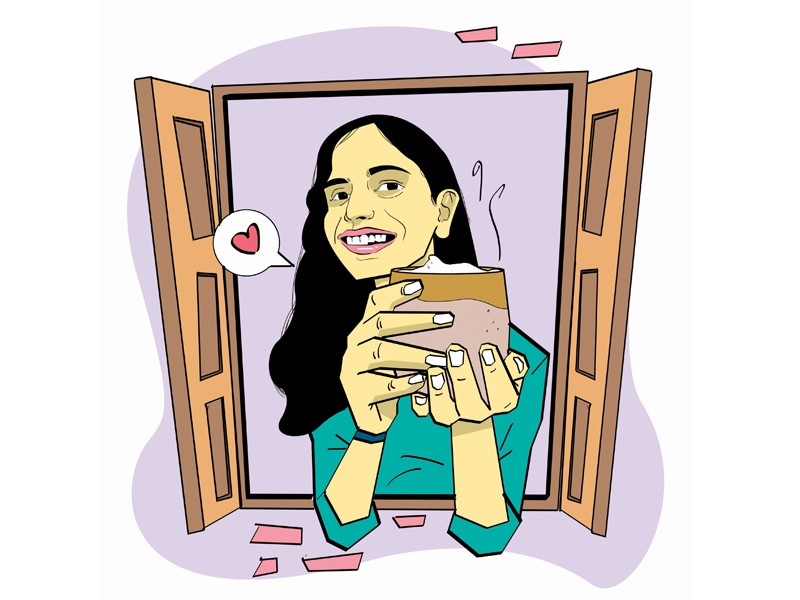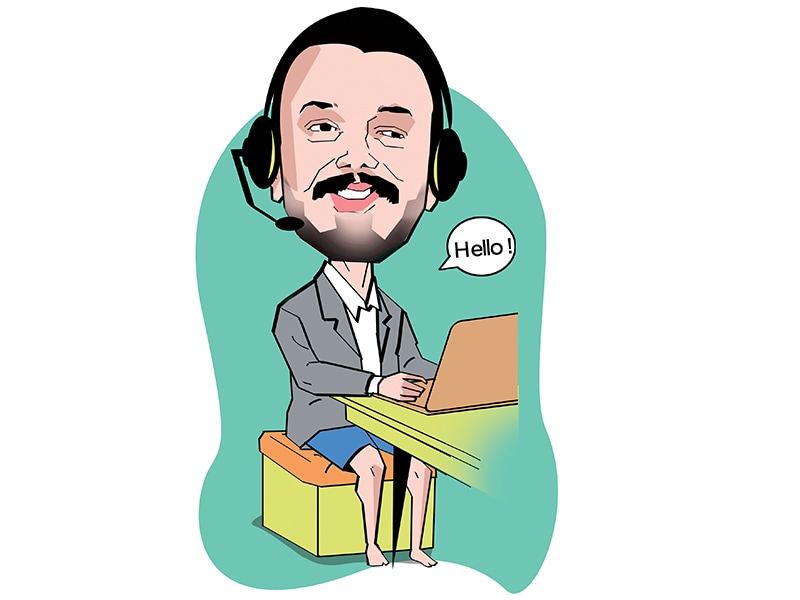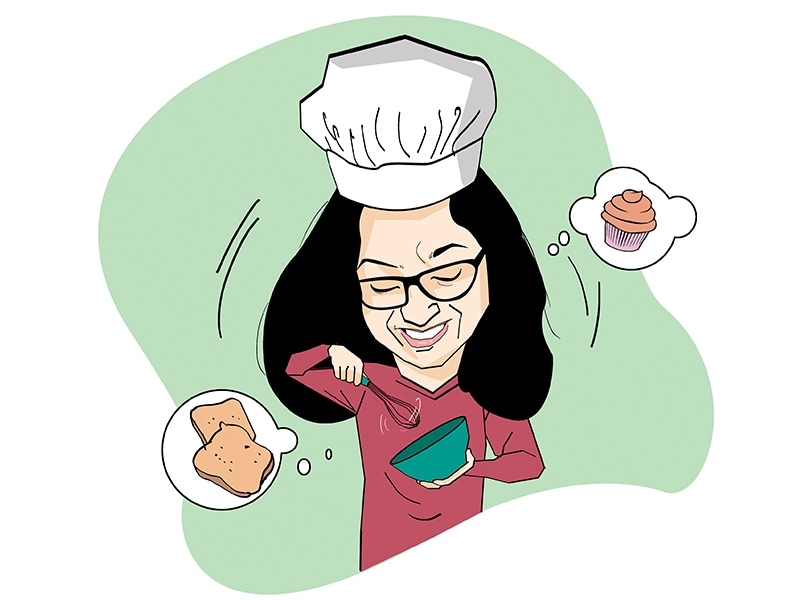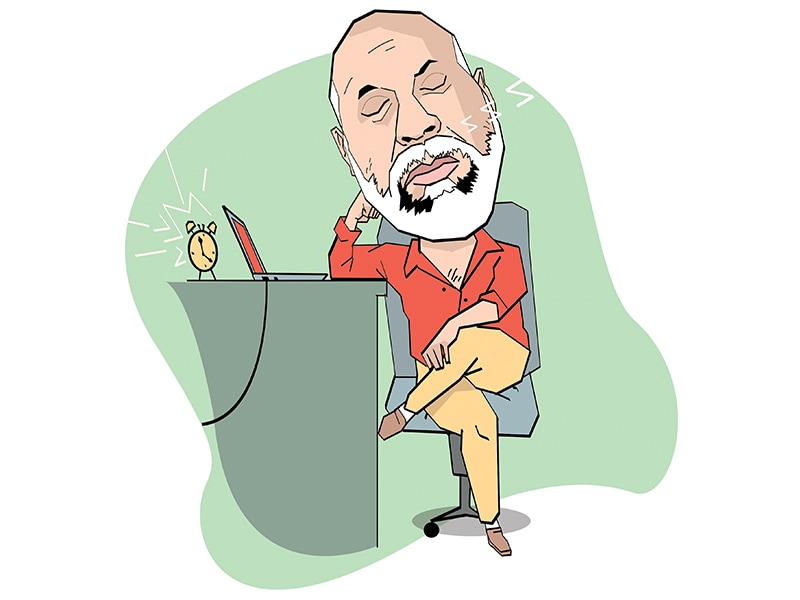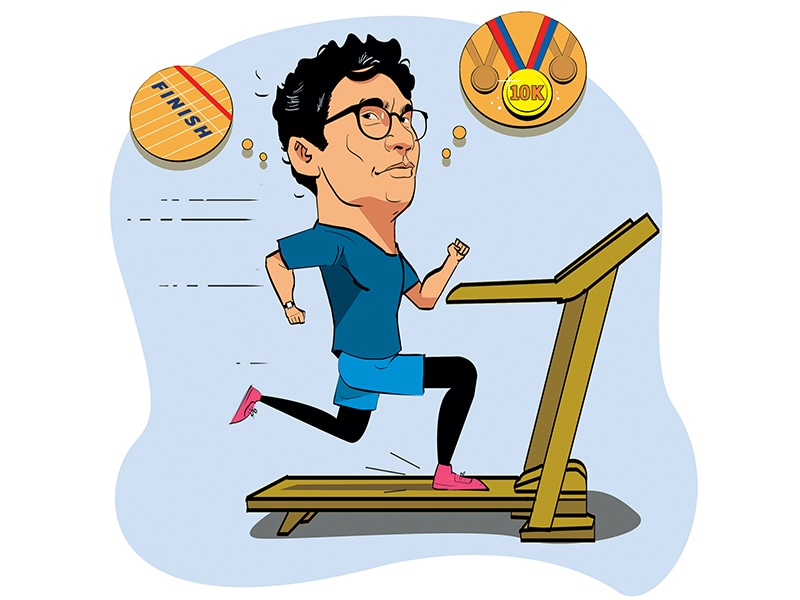
Forbes India 2020 Rewind: Getting quirky in quarantine
Working from home allowed Forbes India staffers to experiment with the unusual (attending meetings in shorts) and the unexpected (a power nap post-lunch)
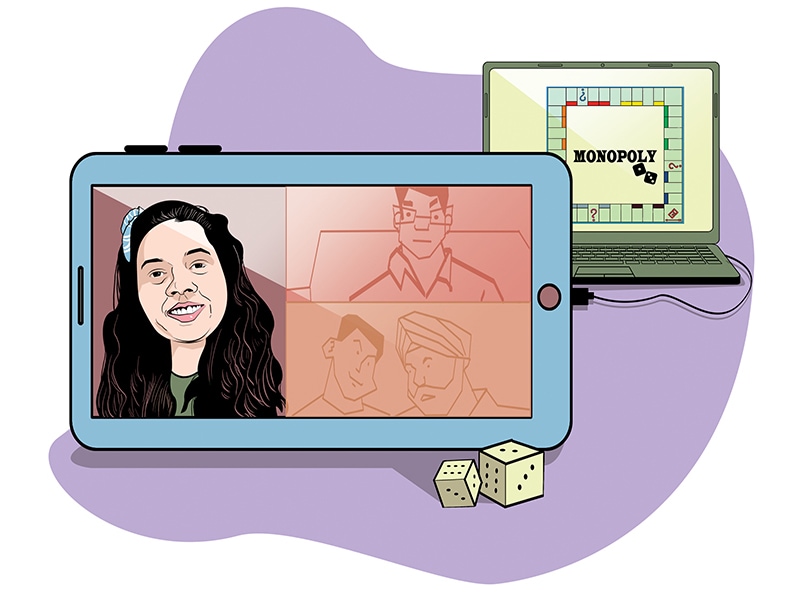 Infographics: Chaitanya Dinesh Surpur
Infographics: Chaitanya Dinesh Surpur
Online Board Games Kill Boredom
Pooja Sarkar
We all have WhatsApp groups which provide comfort and entertainment in our lives. One such group that I have feels more or less like home—it’s called ‘The Infamous Five’ (seriously). Apart from discussing life, politics, sports and what we’ve ordered for lunch, our favourite pastime is to play board games—between us we own multiple sets of Scotland Yard, Deal Monopoly, Flip Uno, Normal Uno (obviously), Jenga, Fletter and Poker, to name a few. It’s like having a cupboard filled with them… you name it and we’ve got it.
Over the last six years, we have met and played board games from Friday nights to Sunday afternoons. We fight, we get angry, we laugh at our own stupidity (of a card gone wrong) and mostly bring upon misery by ganging up on the person who is winning. Just before the lockdowns, we had met for a farewell party and thought our days of playing board games are over. How wrong we were!
The online versions came to our rescue and helped us kill boredom while we sat in four different locations—Johannesburg, Gurugram, Mumbai and Kolkata. We still play Deal Monopoly almost every weekend. Though I also enjoy Scrabble Go, online carrom and a bunch of Japanese maths games, this is my favourite game for the group.
We switch on our laptops and simultaneously get on video calls on our phones to ‘steal each other’s properties, ask for rents of $8 million in one go and wipe out each other’s bank balance’. It doesn’t matter that we are thousands of kilometres apart—we still scream, laugh and let our neighbours know that we have wild company.
While we are immersed in our games for hours, we order food on the side and enjoy a glass of beer or a cup of hot chocolate. Conversations about life are suddenly interrupted by ‘Give me your blue electric works’… and suddenly you realise life goes on. We refuse to grow up… not yet.
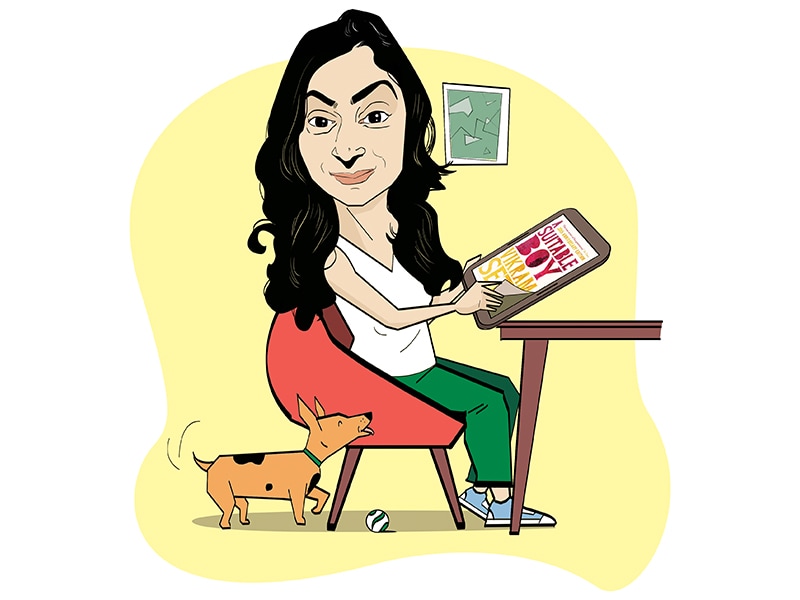
Word’s Worth
Pankti Mehta-Kadakia
At 12, I mentally giggled through a dramatic rendition of Vikram Seth’s delightful poem, ‘The Louse and the Mosquito’ in drama class. At 17, 23, 28, I’ve picked up, leafed through, and gingerly placed back the author’s almost-1,500-page magnum opus, A Suitable Boy, losing the nerve to make the commitment each time. Until the lockdown.
It helped that I now had the book on a Kindle, no longer weighed down by the (non-metaphorical) weight of the novel. It also helped that I’d be taking on this challenge along with a group of readers who, much like me, had rekindled the desire to dive right in with the release of Mira Nair’s TV show version around the corner, starring Tabu et al. These people were all strangers, connected via an Instagram DM group, with reading milestones charted out. Could we make it through the reams and reams of pages in a month? Well, it was easier than I thought—the book races through most chapters, and the story is the kind that gives you something to look forward to at the end of a work day. It travelled with me around the house for when I could steal a few moments away, while eating, falling asleep or waiting on someone to join that call. Perhaps my greatest lockdown reading achievement was not in finishing the giant tome in a few weeks, but being able to replace doomscrolling mindlessly on Instagram as the first task of my day, with a leisurely half hour of reading instead. It’s a habit I’ve tried to cultivate for years, and unfortunately, lost as easily since too.
Yes, the lockdown opened up a whole lot of reading time, but for me, like many others, this came in waves, thanks mostly to Netflix. This e-group of people I have no doubt would make really interesting acquaintances. IRL, spanned Indians from the motherland as well as countries like Finland and the UK, biologists to consultants. I’d be hard-pressed to remember their names now, but I can match their opinions of Rupa Mehra and the most suitable of boys for Lata—along with their views on modern politics and how they relate to those in the book—to those floating Zoom faces.
In a world of physical distancing, it’s been a ride to find a 21st century community that’s rooted in the old-school written word: The most lasting of connections.
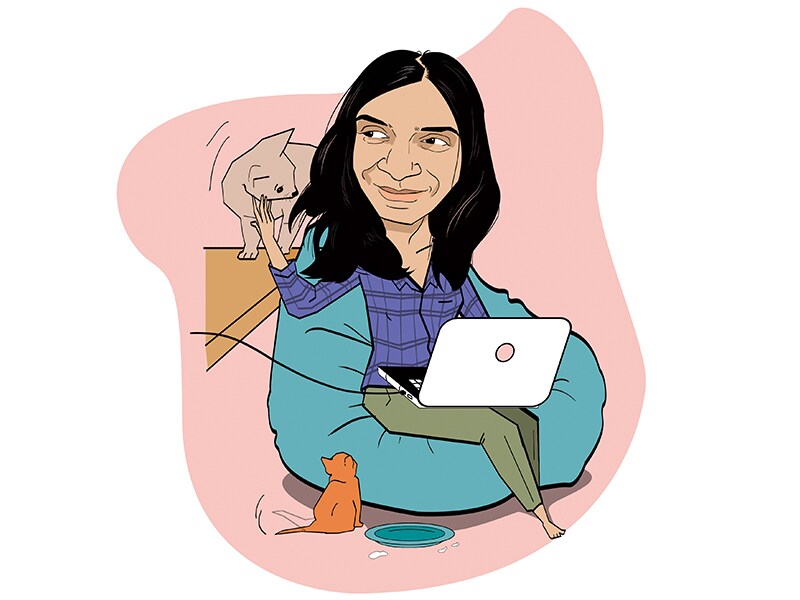
Cat Call
Monica Bathija
I was on a work call that evening when she strutted into the living room heading straight for my bedroom. That morning I had woken up to the sound of kittens meowing under my bed and when I opened the main door, the mother was standing outside demanding to be let in. All day she had been in and out of the house, coming in to feed them at regular intervals. She had sneaked in one kid and then another the earlier evening without us realising, and considering they were scampering around near my desk, I had been driven out of my office space. “Can I call you back in five minutes?” I quickly told the person I was interviewing, worried she was trying to sneak in a third kitten even as I had been looking for ways to get her to take them away all day.
It was the middle of the extended lockdown, and for a few days before this fateful day every time she had found the door to my first-floor flat open she had walked in to check out my room. It was only later that I realised why and when the ‘looking for a safe house’ cycle repeated about four months later I was prepared. She has had a second litter and has been bringing on kitten cuteness in spades in her attempt to enroll me as a cat parent. I worry and I look out for them but it’s a battle of wills—being owned by a cat was not on my pandemic bucket list.
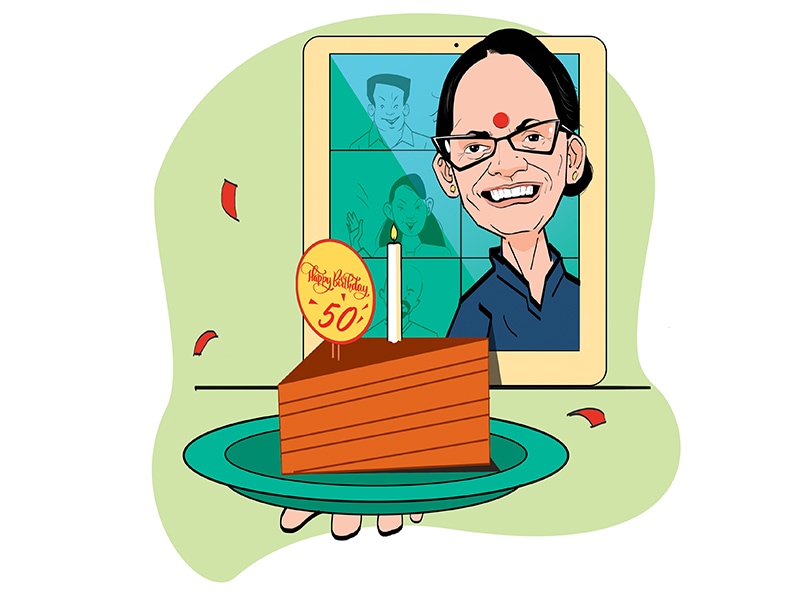
Blowing Candles Virtually
Benu Joshi Routh
Many a birthday plans would have been scuppered by the lockdown had it not been for some overzealous people and their strong desire to make merry, albeit online. WhatsApp and Zoom were only too happy to conspire.
With at least two online birthdays to celebrate every month, my kids have been thrilled to get unlimited ‘official’ time on the laptop to rig up slideshows set to soppy songs for all the birthdays. Quick on the uptake, they have figured out all the features a Zoom call has to offer and have been putting it to good use. Several apps have been downloaded and tested to churn out customised compositions.
The ease of hosting a virtual birthday has ensured that it is a global affair, with the niece from Dublin, the nephew from Victoria and the uncle from San Francisco, all joining in to pop some bubbly and sing the birthday song.
Many of my contemporaries turned 50 during the lockdown and all my attempts to escape the online parties by offering lame excuses of poor connectivity and bad network failed. Would anyone let me skip a milestone birthday?
A friend in Austin, US, went to great lengths to celebrate his wife’s 50th: He ensured that all the invitees in different parts of the world, yours truly included, received a package containing party accessories and a cake, which was cut at the same time as the birthday girl. A webpage dedicated to her was created in advance, with all of us sending in our contributions in the form of illustrations, slideshows, videos, songs, and what have you. But a tougher challenge than to get the creative juices flowing was to ensure that my kids did not polish off the cake before the Zoom call.
Then, there have been those one-sided online parties, where the attendees have looked on while the birthday girl would blow out the candles, cut the cake and sink her teeth into a gooey chocolatey chunk. All you could do was cheer, clap loudly and secretly wish you would get a slice too.
Now, after numerous online birthday parties, a sense of ennui and monotony is beginning to set in. Conversations are running dry and one has to deal with long awkward silences. Whenever an online birthday approaches these days, I start thinking of creative ways to wriggle out of it in advance.
And, now my family is excited about celebrating yet another online birthday—the fourth of my niece’s pet Cocker Spaniel.
It won’t be an exaggeration to say I have had online birthday parties coming out of my ears.
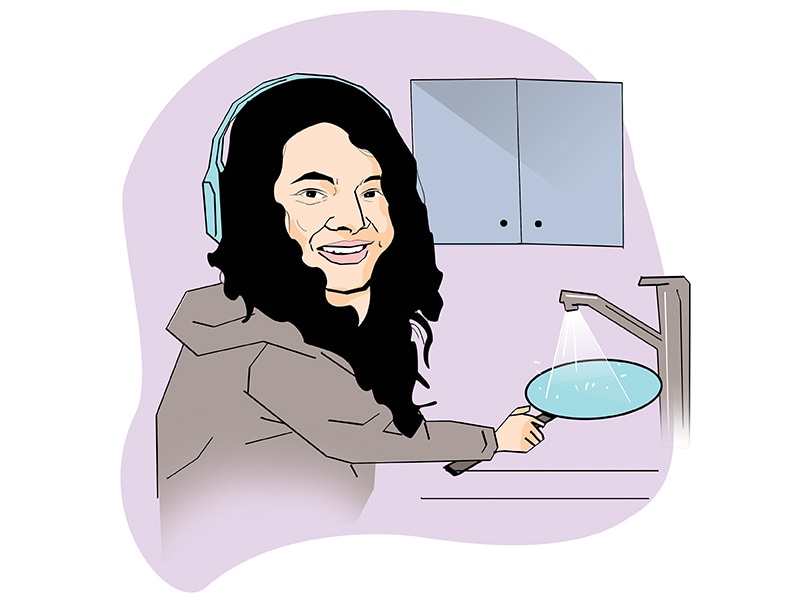
Making Peace with Washing Utensils, Thanks to Podcasts
Divya J Shekhar
I have always been a ‘listen to music and let your mind wander’ kind of person. I could never get myself to listen to podcasts, unless it was a particularly compelling story narration.
Things changed about a month into the lockdown. I shared my rented accommodation in Mumbai with three girls. Stripped of the privilege of outsourcing domestic chores in the wake of the pandemic, my flatmates and I divided tasks among us, all the while talking, laughing, or discussing the latest on Covid. So when all three of them left for their respective homes, I realised I wasn’t used to deafening silence while cooking, mopping the floor, washing clothes etc. Especially the drudgery of cleaning utensils that miraculously piled up in the sink despite washing them after every meal.
I listened to music all the time [typical], but very soon, the songs started to wear me off too. I finally turned to audio storytelling, starting with the Modern Love podcast by The New York Times and the Hindi story series Thriller Factory helmed by filmmaker Anurag Kashyap.
What seemed like a disengaged, silence-filling activity soon became a two-way interaction. As I progressed to other shows like The Anxiety Podcast by Caroline Foran, Cyrus Says hosted by Cyrus Broacha, 3 Things by The Indian Express—and even podcasts by my colleagues at Forbes India—I was participating, reacting, laughing, gathering new perspectives, gaining knowledge, and even constructing visual registers from the smallest details shared by the hosts or the guests. Hey, I still need the escapism of music, but at least podcasts have helped me make my peace with washing utensils.
